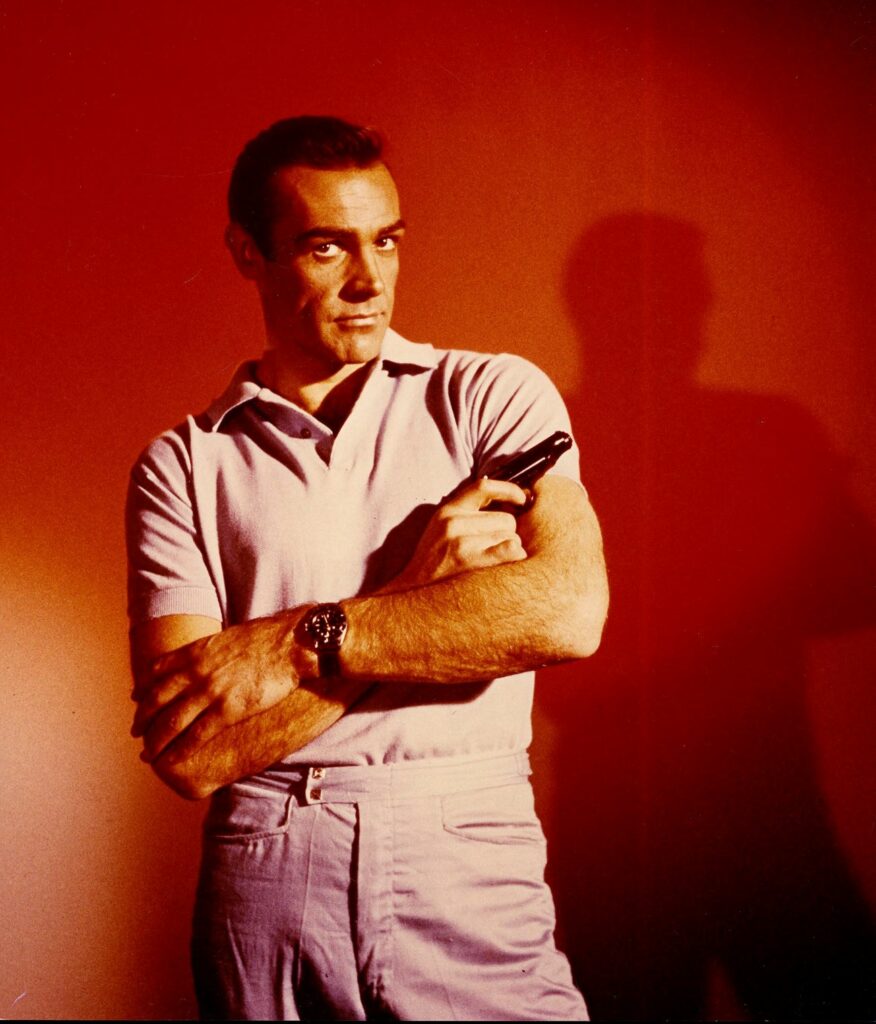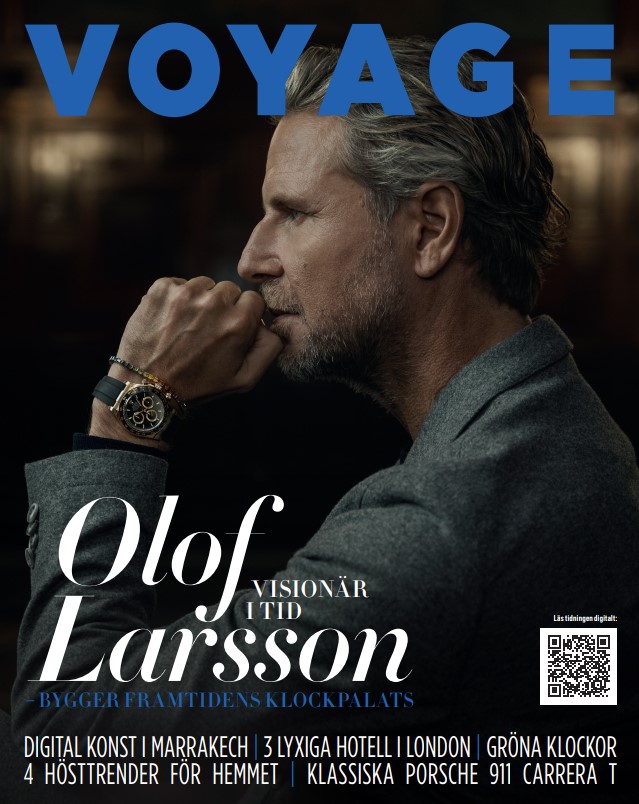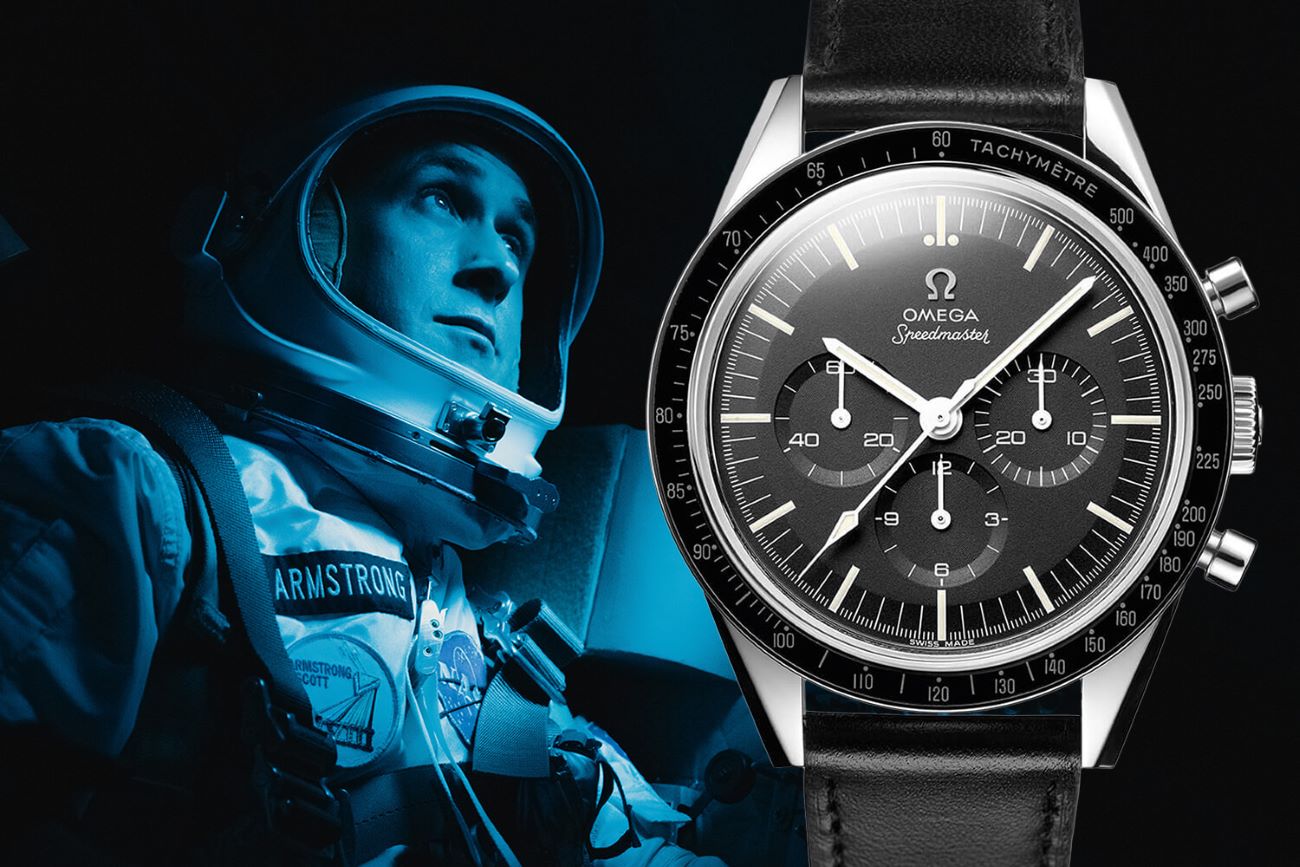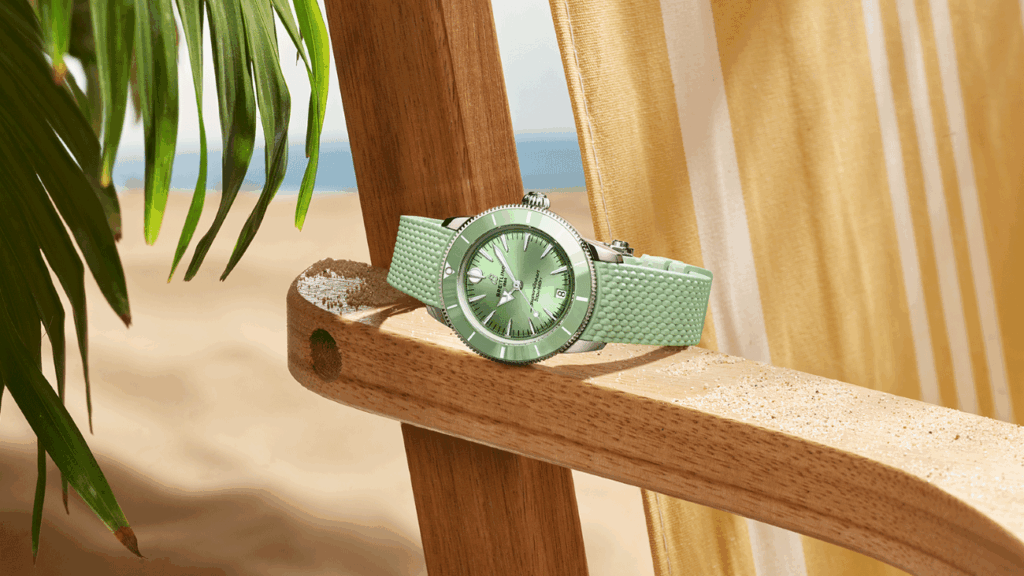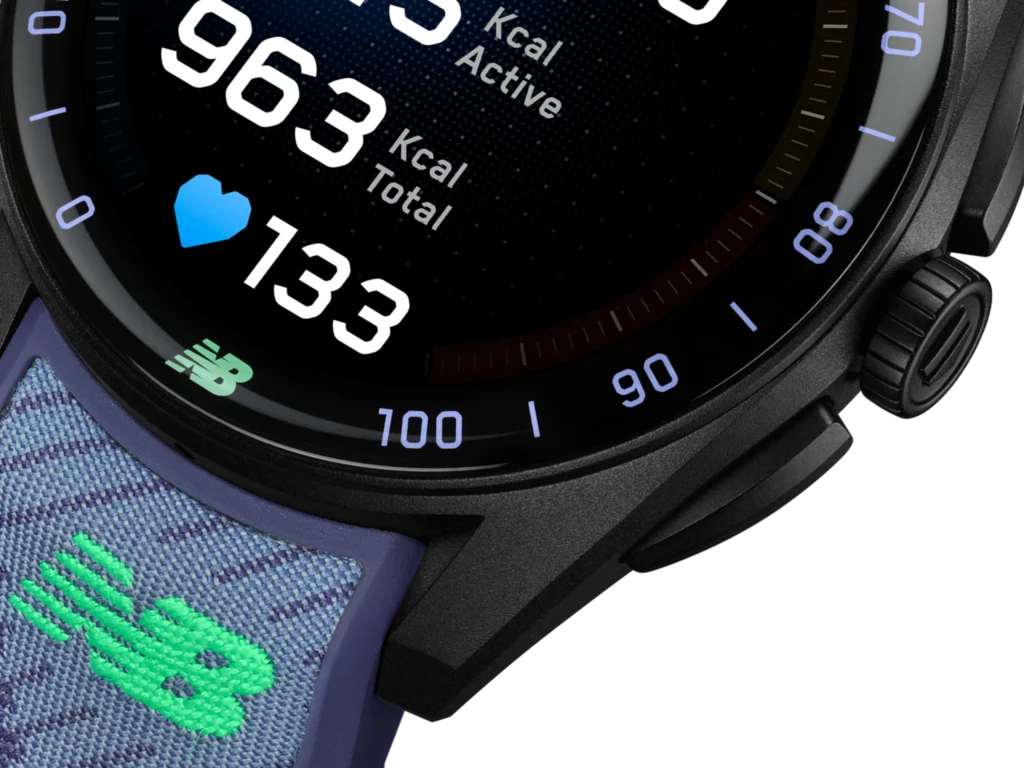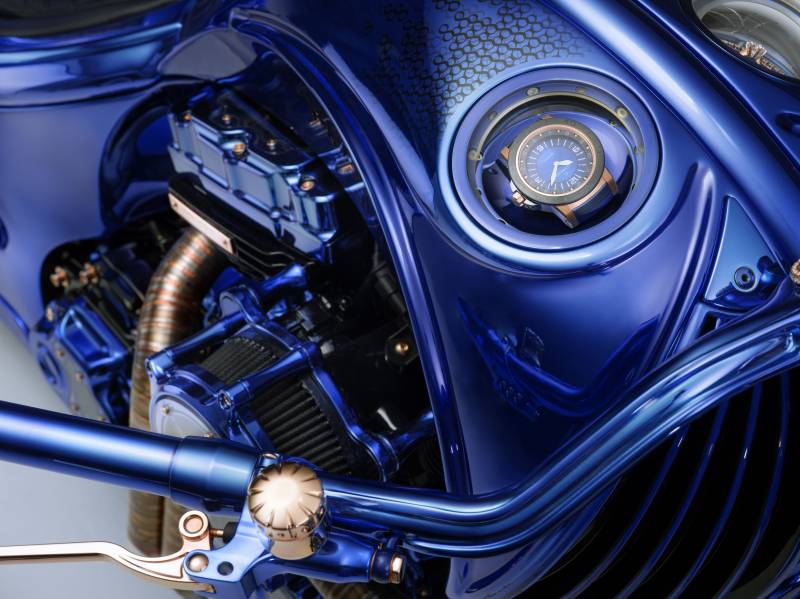FROM THE DEADLY CHARM OF JAMES BOND TO THE RUGGED RESILIENCE OF CAPTAIN WILLARD, WATCHES HAVE ECHOED THE TRAITS OF THE CHARACTERS THAT WEAR THEM, PLAYING THEIR ROLE IN CINEMA HISTORY. WE EXPLORE FIVE LEGENDARY TIMEPIECES THAT TRANSCENDED THEIR FUNCTION TO BECOME SYMBOLS OF CHARACTER AND STYLE, CAPTIVATING AUDIENCES AND COLLECTORS ALIKE.
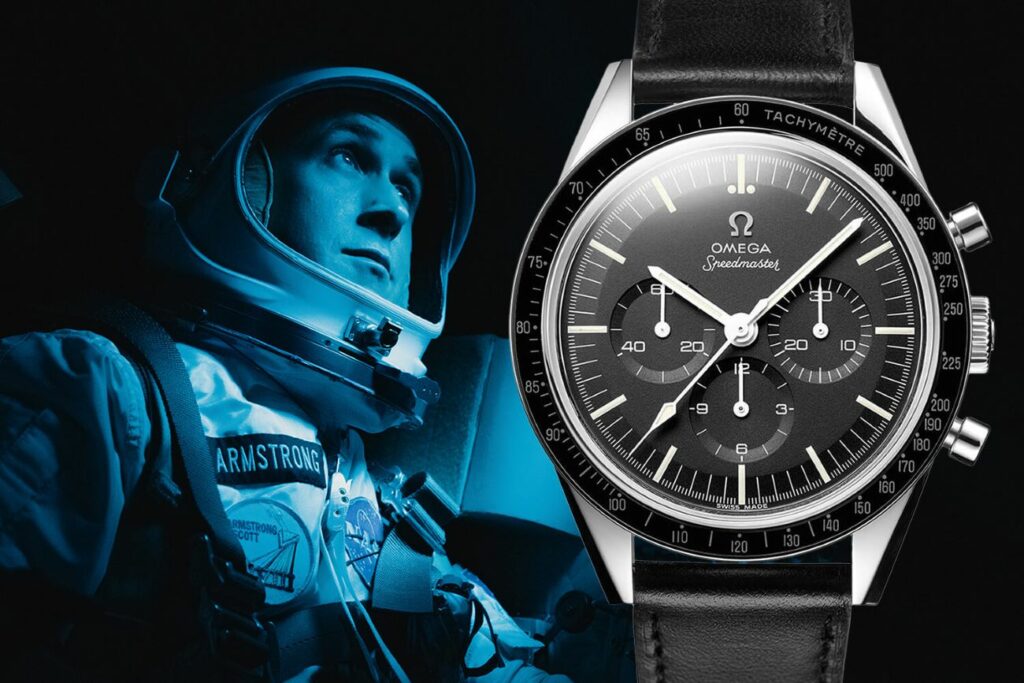
WATCHES IN CINEMA are not merely accessories; they are integral to character development, storytelling, and often serve as symbols of status and style. Over the decades, numerous timepieces have graced the silver screen, leaving an indelible mark on both film culture and the luxury watch industry. In this exploration, we give you a close up on five iconic watches that have impacted cinematic history.
OMEGA SPEEDMASTER ST 105.003
Movie: First Man (2018)
Features: 38mm Stainless Steel case, tachymetric scale, water resistance up to 50 metres, original bracelet 7912 and manual winding chronograph calibre 321.
THE OMEGA SPEEDMASTER reference 105.003 is a cornerstone of horological history, having withstood the intense scrutiny of NASA testing in late 1964 and subsequently earning its official approval on March 1, 1965. This classic model became the preferred choice for many astronauts during the Gemini missions, earning the nickname “Ed White” in tribute to the first astronaut who ventured outside a spacecraft. In First Man, Ryan Gosling wears the Speedmaster during his character’s Apollo training at NASA. This model closely resembles the very watch worn by Ed White during the groundbreaking Gemini 4 mission on June 3, 1965, where he made history as the first American to perform a spacewalk. Known as the
“Moonwatch”, the Omega Speedmaster also boasts the legacy as the first watch worn on the moon during the Apollo 11 mission in 1969, a milestone that cemented its status as a symbol of exploration and human endeavour. While deeply rooted in historical significance, the Speedmaster’s cinematic presence has flourished in films like First Man, which chronicles Neil Armstrong’s epic journey to the lunar surface.
In the film, the Speedmaster can be seen as more than a mere instrument, emerging as a powerful symbol of human curiosity and technological innovation. Its inclusion serves to connect audiences with the monumental achievement of the moon landing, underscoring Omega’s dedication to precision and
reliability. Since its historic lunar voyage, the Speedmaster has remained a solid favourite among collectors and enthusiasts. It’s rich heritage and unmistakable design ensures that it continues to hold a prominent place in both watch collections and the realm of cinema.
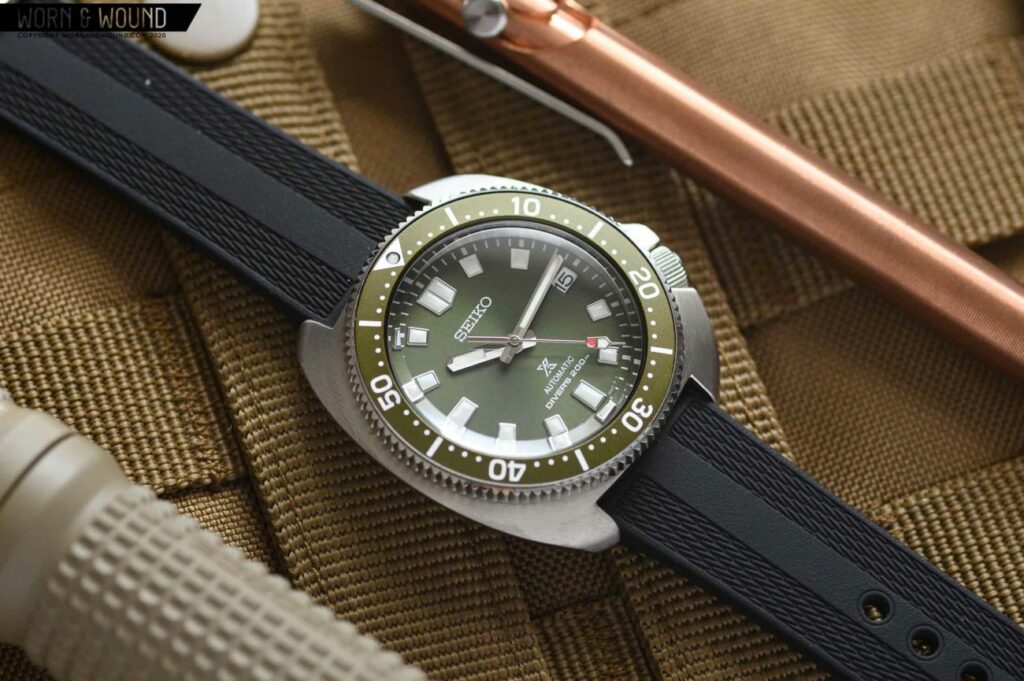
SEIKO 6105
Movie: Apocalypse Now (1979) Features: 44mm case, water resistance up to 150 metres, rotating bezel, GL721 “Chocolate Bar / Captain Willard” rubber strap and the 6105 automatic movement.
THE SEIKO 6105 has garnered a devoted following among watch enthusiasts and collectors, thanks in part to its appearance in Francis Ford Coppola’s Apocalypse Now. Worn by Martin Sheen’s character, Captain Willard, the 6105 (often referred to as “the Willard”) is an exceptionally robust timepiece designed for survival, and as such it was one of the most popular watches worn by U.S. service members
during the Vietnam War. Known for its distinctive cushion-shaped case and rotating bezel, the watch can be seen as a symbol of resilience in the midst of chaos. In Apocalypse Now, the watch serves as a functional tool for the character as he wrestles with the film’s themes of war and existential struggle.
Produced between 1968 and 1977, the Seiko 6105 is celebrated for its two distinct case styles: the cushion-cased 8000/8009 and the larger, asymmetrical 8110/8119. Both variations are highly regarded among vintage Seiko collectors. The 6105 followed closely behind Seiko’s first true dive watch, the 6217, marking a significant evolution in the brand’s dive watch lineage. The influence of the 6105 is evident
in the subsequent generations of Seiko watches. Its 4 o’clock crown design has become a hallmark of many modern Seiko divers, while the cushion-shaped case inspired the Seiko reference 6309 introduced in 1976, which has since become a coveted piece in its own right. Later models, such as the SKX series and the contemporary “Turtle” line, can trace their design heritage directly back to the 6105. The Seiko 6105 has experienced a recent revival in popularity, particularly among collectors who appreciate its vintage charm and rich history. Its memorable appearance in Apocalypse Now has solidified its status
as an iconic timepiece, appealing to those who seek both historical significance and practical functionality in their watches.
KNOWN FOR ITS DISTINCTIVE CUSHION SHAPED CASE AND ROTATING BEZEL, THE WATCH CAN BE
SEEN AS A SYMBOL OF RESILIENCE IN THE MIDST OF CHAOS
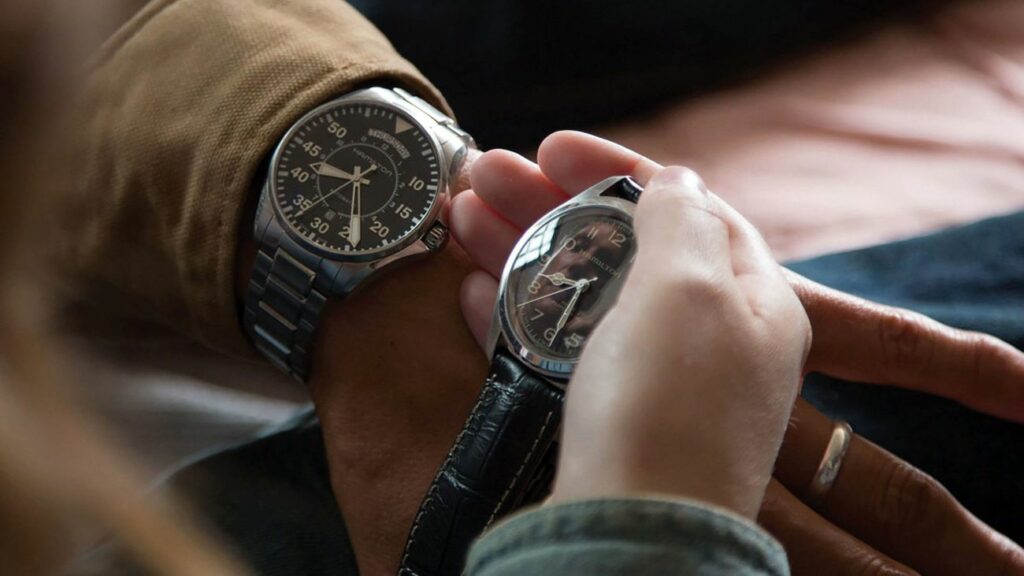
HAMILTON KHAKI FIELD Movie: Interstellar (2014)
Features: 42mm case, military-style design, leather strap and the H10 automatic movement.
WITH A REMARKABLE presence in over 450 major films, the Hamilton Watch Company has etched its name into cinematic history. For nearly nine decades, it has earned the title of the quintessential movie brand, thanks to its deep-rooted connections with Hollywood. What makes Hamilton particularly
appealing is its blend of quality and affordability. These meticulously crafted timepieces offer exceptional value, making it easy for both film buffs and watch enthusiasts to own the models they admire
on screen. Hamilton watches first captured the spotlight in the 1932 classic Shanghai Express with Marlene Dietrich, and they continue to make waves in contemporary cinema, featuring prominently in
Christopher Nolan’s Tenet and Oppenheimer. Here though, we turn the spotlight on the standout watch showcased in Interstellar. The Hamilton Khaki Field Murph serves not only as a functional timepiece but also as a narrative device in the film. The watch is worn by Cooper, played by Matthew McConaughey, and symbolises the connection between time and human experience, a central theme in the film.

The 2024 Hamilton Khaki Field Murph edition makes the cinematic connection further enhanced, as Hamilton creates an interesting yet genius addition to the design. The seconds hand’s SuperLuminova plots are applied with tiny lines and dots that spell out “Eureka” in Morse code. This is a nod to the
use of Morse code during communication between Murph and her father and makes for a charmingly subtle feature to further relate the watch to the movie.
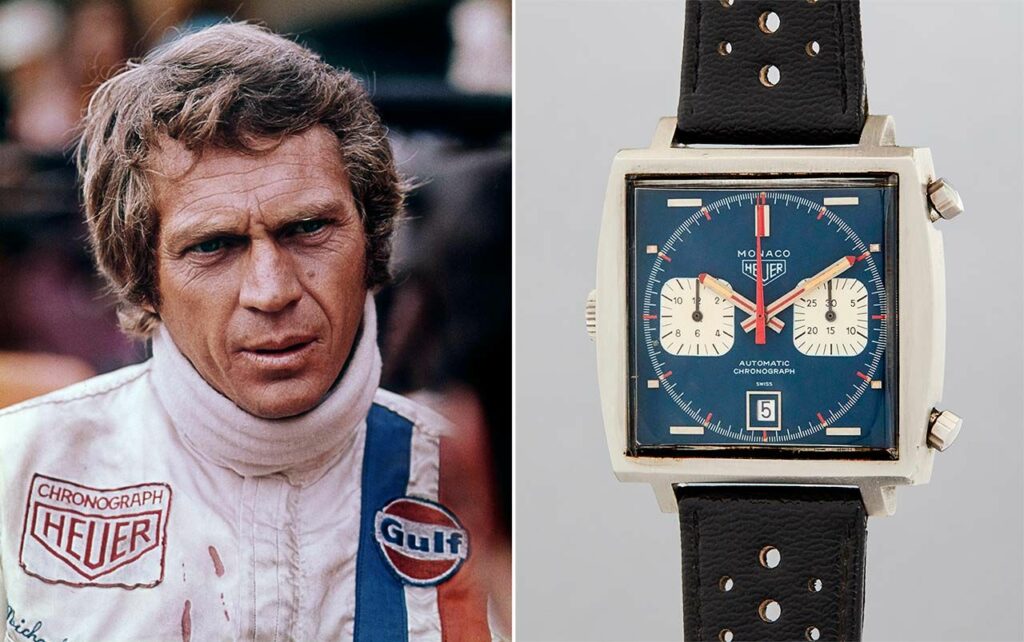
HEUER MONACO
Movie: Le Mans (1971) Features: 38mm square case, chronograph function, water resistance up to 30 metres, leather strap and Calibre 11 automatic chronograph movement.
LAUNCHED IN GENEVA on March 3, 1969, the Heuer Monaco broke the mould as the first water-resistant automatic chronograph with a square case. This remarkable timepiece not only encapsulated the exhilarating realm of motor racing, particularly the Monaco Grand Prix, but also represented a significant advancement in technical innovation. The watch housed the signature Heuer Calibre 11 movement, a pioneering achievement in horology. Departing dramatically from the conventional watch aesthetics of the time, which favoured round cases and simple white dials, the Monaco introduced a truly avant-garde style with its square silhouette, metallic blue dial, and bold red second hand. Its domed glass lent the watch an almost futuristic air, while the left-positioned crown eliminated the need for winding. The
Heuer Monaco quickly garnered attention, hailed as a “revolutionary innovation” in the press. It’s no surprise that McQueen chose the Monaco for his character in Le Mans, solidifying the watch’s place in both cinematic and horological history. Devoted to his craft, Steve McQueen was renowned for his unwavering commitment to authenticity. He famously insisted on performing all his own driving, refusing
to let any stuntman take the wheel in his place. The story goes that on the last day of filming, after driving down the Mulsanne straight at around 200 mph, McQueen pulled up in his 917K for the last time on set.
As he emerged from the car, Monaco on his wrist, chief mechanic Haig Altounian began to tend to the engine.
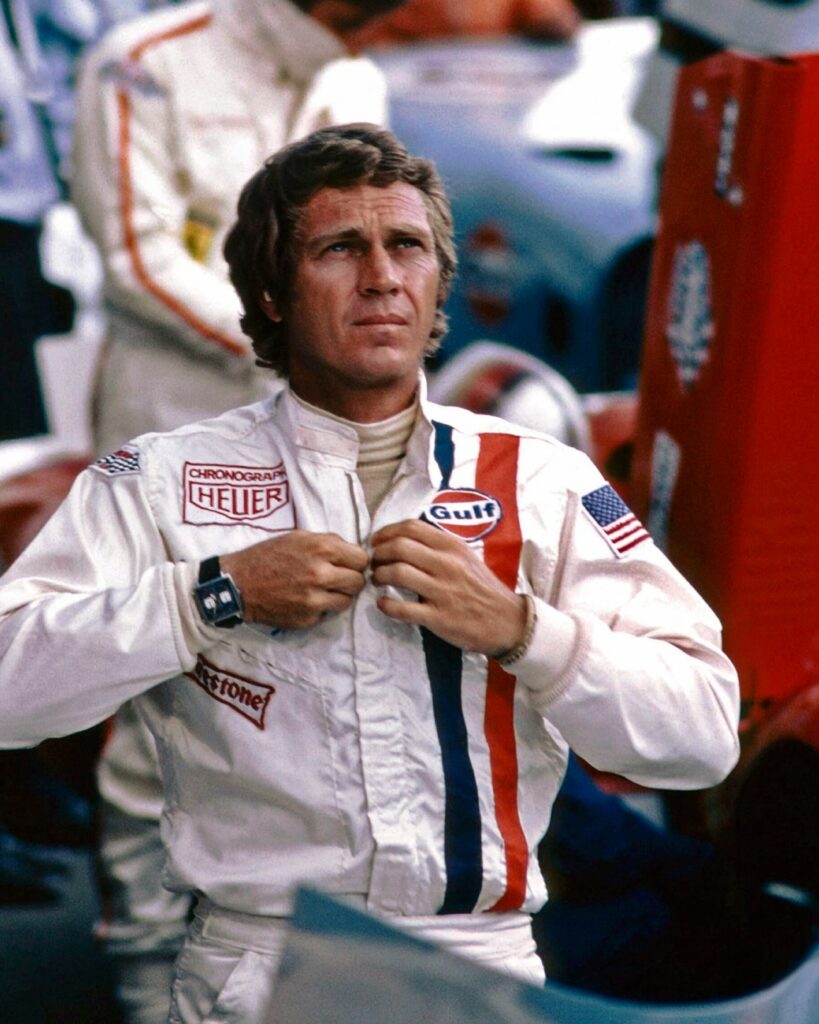
McQueen approached Altounian, removed the watch, and handed it to the mechanic. He reportedly said, “I want to thank you for keeping me alive all these months”. Haig tried to refuse the gift, saying it was too generous a gesture, but McQueen shook his head, and said “It’s too late, it’s
got your name on it.” Over the years, the Heuer Monaco has maintained its cultural relevance, frequently
reimagined in limited editions and collaborations. Its unique design and racing heritage ensure that it remains a standout piece in both watch collections and film history.
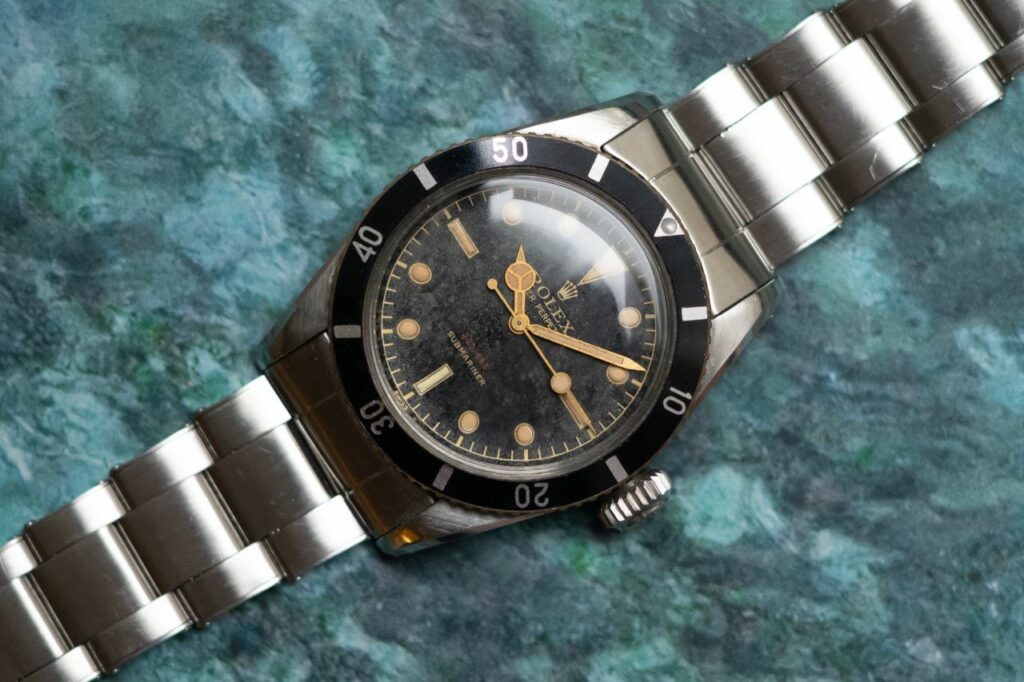
ROLEX SUBMARINER 6538
Movie: Dr. No (1962)
Features: 38mm Stainless Steel case, Bidirectional black aluminium insert rotating bezel, water resistance up to 200 metres, oyster bracelet and 1030 automatic movement.
THE ROLEX OYSTER Perpetual Submariner 6538, commonly known as the “James Bond Rolex”, was originally created and manufactured for underwater exploration in 1953, and 72 years later it remains a paragon of classic design and engineering excellence. In the early 1960s, both the James Bond
film series and the Rolex Submariner were nascent forces. The year 1962 marked the release of Dr. No, the very first film starring the iconic British spy, agent 007. The inaugural movie saw Sean Connery make his debut as James Bond, and the Submariner 6538 “Big Crown” became an extension of his character—adventurous, durable, and undeniably stylish. The watch’s notable appearance in the film transformed the public’s perception of dive watches, elevating them to symbols of luxury and adventure. It’s timeless design, coupled with Rolex’s reputation for precision and reliability, has made it a revered benchmark in luxury diving watches. Over the decades, it has inspired, influenced, and been a must-have for serious watch collectors around the globe. The version worn by Bond in Dr. No was not on the customary
Oyster bracelet, but rather on a striped NATO-style strap, pre-empting the popularity of this strap by at
least 60 years. Bond’s Submariner 6538 also appeared in later Bond films including, From Russia with
Love (1963), Goldfinger (1964), and Thunderball (1965). James Bond eventually wore other watches in the wildly successful film franchise, Rolex and otherwise, but the Submariner 6538 will forever be the ultimate James Bond timepiece. While Rolex and 007 may not have an official partnership today, their union left an indelible mark on both the brand and the James Bond universe, forever intertwining their legacies.
OVER THE DECADES, IT HAS INSPIRED, INFLUENCED, AND BEEN A MUST-HAVE FOR SERIOUS WATCH COLLECTORS AROUND THE GLOBE
